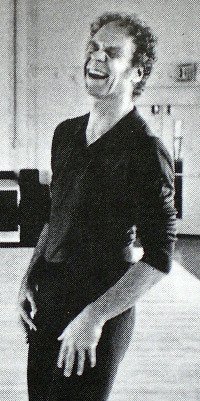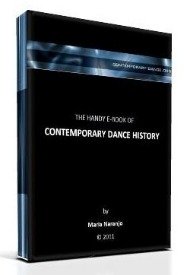MERCE CUNNINGHAM
If you’ve ever felt blocked during a creative process or don’t see well how to start or go on with your choreographic piece, come here and refresh your memory about one of the most productive and charismatic figures of contemporary dance history: Merce Cunningham.
Even though I’ve experienced my self a weird feeling towards Cunningham aesthetics, each time I see one of his pieces, or get close to his artistic ideas, an impulse of creative freedom awakes within my self.
Regardless of the huge amount of choreographic possibilities displayed in his dances, there’s a key sustaining his work that opens his fantastic universe: WISDOM.
Usually, we think of productive artists as people who KNOW a lot of things or have a very sophisticated control of technical skills, tools or ideas. Somehow this is true, but even though Cunningham was indeed a master of choreographic and technological exploration, his strength came from an attitude of ACCEPTANCE OF THE SITUATION.

If you’ve already read the summary about him in our contemporary dance history page, you know that he used to propose the components of an ‘Event’, but he didn’t really make a compositional work to arrange the relationships between them. So dance, music, costumes, set and whatever else would appear to the audience as a situation, towards which Cunningham would have an attitude of acceptance.
This doesn’t mean that he would not have any aesthetical criterion or position. I’ve read that pieces that didn’t ‘work’ would disappear from the repertory of the company. Somehow, he did choose a part of the results of his whole experimenting process. But the key to having such a big production to choose from was the system of ideas that supported his ‘compositional’ method.
“It’s about considering every thing as being what it is in its time and space and not in its relationships, real or symbolic, to other things. One thing is simply this thing. It’s good to give every thing this recognition and this love. Of course, the world, being what it is (or being what we’re starting to understand that it is), we know that every thing is also all the other things, in fact or potentially. It’s then useless, I think, to try to establish the relationships, the continuities, the orders and structures…” (In: 7 Arts. 1995. M. Cunningham. Ephemeral Art)
It would not be fare to avoid mentioning John Cage as responsible for the use of this method. Cunningham himself says that it was Cage who had the first time the idea of doing an ‘Event’ (in the lack of another name for it). But then, it would also be incomplete to mention Cage’s initiative, without looking back to the place from which those ideas came from: the ZEN.
The ZEN
Zen (禅) is the Japanese name of a Buddhist tradition (Mahāyāna), coming from China and India in the origins. It is one of the most known and appreciated Buddhist schools in the western world, for who it represents a wide spectrum of practices of this type of Buddhism in all Asia.
Have a look of an example of what Zen is:
It is said that one of the goals of the Zen is to eradicate conceptual reasoning, so that intuitive wisdom can rise. Zen is among all, the Buddhist tradition of intuition and spontaneity.
We can understand then how, in the middle of a very Aristotelian, Cartesian (mainly logical and reasoning) society, John Cage and Merce Cunningham’s works, shine like a refreshing proposal, full of the ‘unexpected’, and rich in possibilities.
Cunningham’s pieces also display nature as a main inspirational topic. This characteristic of his work could be also considered as a consequence of his identification with the Zen.
Here's an example:
Merce Cunningham - Beach birds for camera (1993) excerpt:
If you’re interested in the artistic production of Merce Cunningham, you can find a complete listing of the pieces at his website. There you’ll also find first hand information about him and the current activity of the company.
And remember that there's a summary at our page about Contemporary Dance History that lists Merce Cunningham’s ideas and contributions.
I hope you enjoyed the reading (and watching!). But more than that, I hope that remembering the wisdom that Merce Cunningham brought into the western choreographic universe, helps us all fertilizing our creative field.
Read further at our forum for questions about dance technique:
What is Cunningham dance technique?
Return from Merce Cunningham to Contemporary Dance History
Return to Contemporary Dance Home Page
The handy e-book of CONTEMPORARY DANCE HISTORY:
The Dance Thinker is our occasional E-zine. Fill in the form below to receive it for free and join us.
Read:
"The Dance Thinker"
BACK ISSUES
Post contemporary dance announcements (workshops, auditions, performances, meetings and important news... it is free.)



